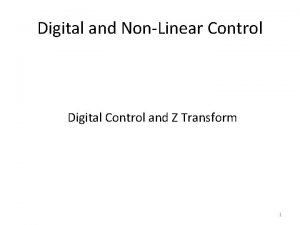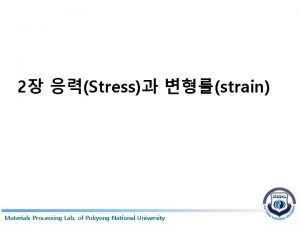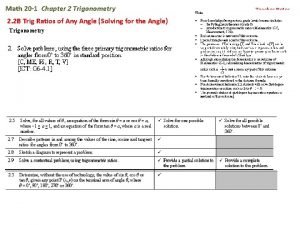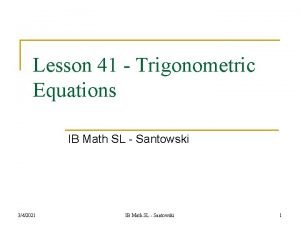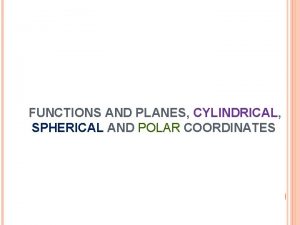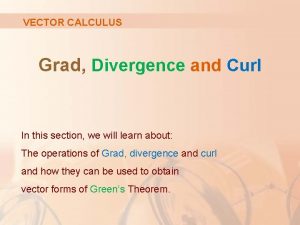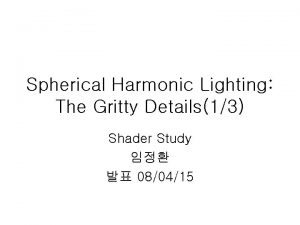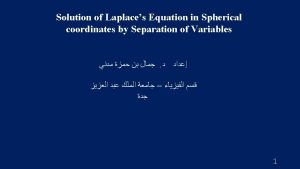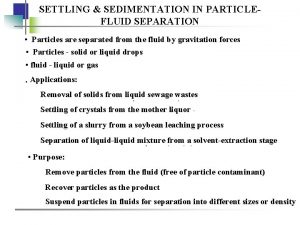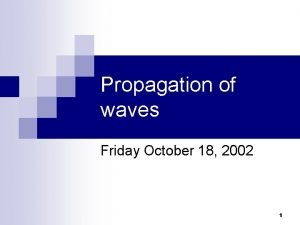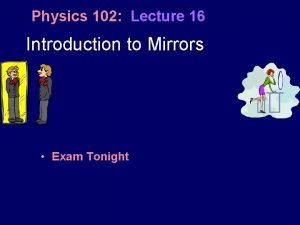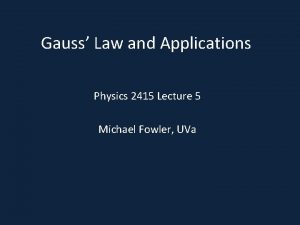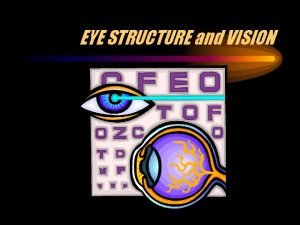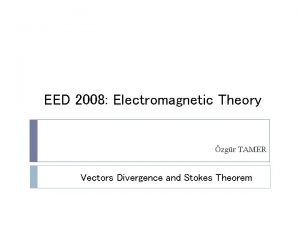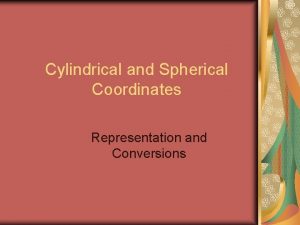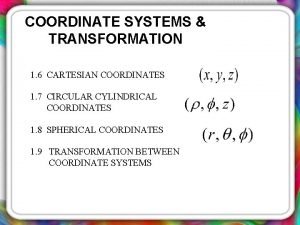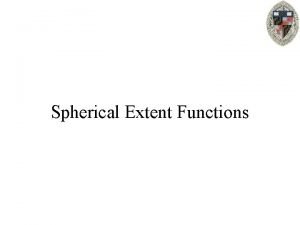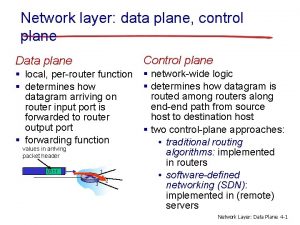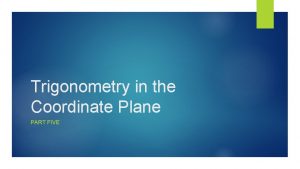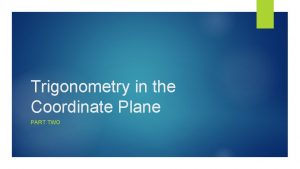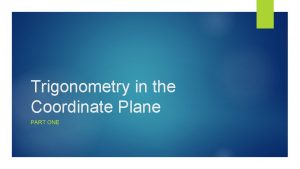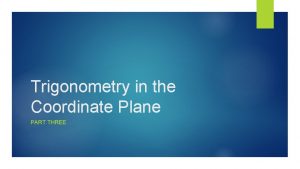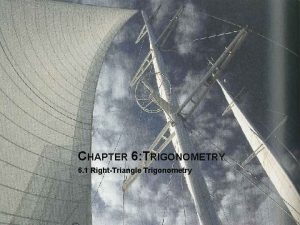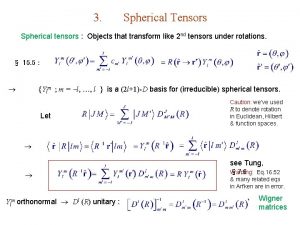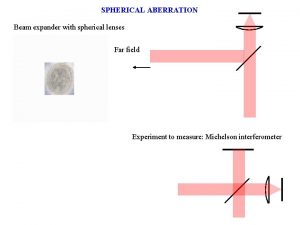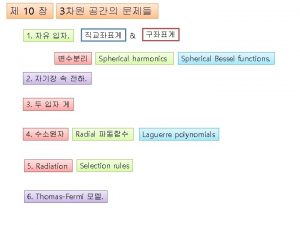TRIGONOMETRY MATH 12 1 Plane and Spherical Trigonometry
























- Slides: 24

TRIGONOMETRY MATH 12 -1 Plane and Spherical Trigonometry

TRIGONOMETRY • Derived from the Greek words “trigonon” which means triangle and “metron” which means to measure. • Branch of mathematics which deals with measurement of triangles (i. e. , their sides and angles), or more specifically, with the indirect measurement of line segments and angles.

TRIANGLES •

TRIANGLES Classification of triangles according to sides: • Scalene Triangle - a triangle with no two sides equal. • Isosceles Triangle - a triangle with two sides equal. • Equilateral triangle – a triangle with three sides equal.

CLASSIFICATION OF ANGLES •

Lesson 1: ANGLE MEASURE MATH 12 -1 Plane and Spherical Trigonometry

OBJECTIVES At the end of the lesson the students are expected to: • Measure angles in degrees and radians • Define angles in standard position • Convert degree measure to radian measure and vice versa • Find the measures of coterminal angles • Calculate the length of an arc along a circle. • Solve problems involving arc length, angular velocity and linear velocity

ANGLE • An angle is formed by rotating a ray about its vertex from the initial side to the terminal side. • An angle is said to be in standard position if its initial side is along the positive x-axis and its vertex is at the origin. • Rotation in counterclockwise direction corresponds to a positive angle. • Rotation in clockwise direction corresponds to a negative angle.

ANGLE MEASURE •


CONVERTING BETWEEN DEGREES and RADIANS •



COTERMINAL ANGLES •

COTERMINAL ANGLES •

LENGTH OF A CIRCULAR ARC • r S

LENGTH OF A CIRCULAR ARC •

LINEAR SPEED •

ANGULAR SPEED •

RELATIONSHIP BETWEEN LINEAR and ANGULAR SPEEDS •

LINEAR and ANGULAR SPEED •

LINEAR and ANGULAR SPEED •

LINEAR and ANGULAR SPEED 5. Two pulleys, one 6 in. and the other 2 ft. in diameter, are connected by a belt. The larger pulley revolves at the rate of 60 rpm. Find the linear velocity in ft/min and calculate the angular velocity of the smaller pulley in rad/min. 6. The earth rotates about its axis once every 23 hrs 56 mins 4 secs, and the radius of the earth is 3960 mi. Find the linear speed of a point on the equator in mi/hr.

REFERENCES Algebra and Trigonometry by Cynthia Young Trigonometry by Jerome Hayden and Bettye Hall
 Data plane control plane and management plane
Data plane control plane and management plane Forward equivalence class
Forward equivalence class Mapping between s plane and z plane
Mapping between s plane and z plane 포아송비
포아송비 Math 20-1 trigonometry review
Math 20-1 trigonometry review Ib math
Ib math Graphing cylindrical coordinates
Graphing cylindrical coordinates Half lambert shading
Half lambert shading Definition of a conservative vector field
Definition of a conservative vector field Spherical harmonics lighting
Spherical harmonics lighting Spherical harmonics lighting
Spherical harmonics lighting Spherical coordinates formula
Spherical coordinates formula Settling velocity stokes law
Settling velocity stokes law Line source
Line source Principal section of spherical mirror
Principal section of spherical mirror Amalgam alloy powder
Amalgam alloy powder Convex mirror cases
Convex mirror cases Spherical symmetry
Spherical symmetry Differential form of ampere's law
Differential form of ampere's law 3 layers of the eye
3 layers of the eye Gradient in cylindrical coordinates
Gradient in cylindrical coordinates Pre carve burnishing of amalgam
Pre carve burnishing of amalgam Cylindrical spherical coordinates
Cylindrical spherical coordinates Transformation between two cartesian coordinate systems
Transformation between two cartesian coordinate systems A flat smooth mirror
A flat smooth mirror


